
Das Transkript zur Folge «The Computer Revolution» aus «The 21st Century»:
Walter Cronkite [00:00:02]:
This is the a revolution that will amplify the already incredible power of the human mind. The machinery is the computer, and it runs where the techniques can be turned to problems of making steel. The computer is not limited to industrial chores. It can turn symbols no man can understand into the words that fill his daily newspaper. The impact of the computer on our lives already is incalculable. Soon, it will transform an age, and the future will be unthinkable without the computer. This computer runs a Bethlehem Steel Mill in Burns Harbor, Indiana. Within its memory banks are the instructions needed to turn a red hot slab of 12 inch thick steel into a shimmering paper thin ribbon a quarter of a mile long.
Walter Cronkite [00:00:57]:
This mill was designed around the computer. Its giant roughing stands and hydraulic Braze are computer directed and controlled. Orders are fed to the computer in the form of punch cards. The ability of computers to run other machines is called process control. It has given the limited brain of the computer muscles of enormous power. This newfound combination will have profound effects on our future. For just as the industrial revolution replaced man’s muscles as an economic asset, So the computer threatens to make valueless the menial mentality. Virtually any structured set of actions can be programmed into a computer.
Walter Cronkite [00:01:43]:
Gathering news is still the job of the reporter. The computer may never take over that function, nor is it likely to write a story a city editor will accept. But it does pick up where the reporter leaves off. Once the story has been written, it is whisked to the typing pool where the words are converted into symbols to be read not by man, but by a machine, the computer. The holes in this paper tape are the symbols a computer understands. With this tape, the computer rearranges the words into columns accurate to character count and even hyphenates words all at the rate of 12,000 lines an hour. And how is this incredibly rapid performance possible? What is a computer? And how does it work? The human hand was the original digital computer. This is the basis of an electronic digital computer.
Walter Cronkite [00:02:41]:
It has but 2 fingers and counts with incredible speed using only two numbers. The 1 and 0 of what mathematicians call the binary code. The counting ability of the computer is used to feed it information. But first, the information is translated into a code. The 2 fingered logic of the computer. The information is then stored in a memory bank made of magnets. The direction in which electrical signals run through the magnets means yes or no, off or on, 1 or 0. Each magnet contains 1 piece of information.
Walter Cronkite [00:03:20]:
A large computer system can store hundreds of millions of such information bits. Information by itself is useless. The computer must be told what to do with it, to add, subtract, Multiply or divide the coded pulses stored in its memory. Parts of that memory contain instructions prepared by a human brain, which provide the computer with the road to follow in order to solve a problem. These instructions are called the program. But the computer cannot actually think. It performs all of its functions by rote. Once an answer is achieved, another program tells the computer to present the solution in the form a man can use.
Walter Cronkite [00:04:11]:
The enormous speeds at which a computer calculates are applied to Complex problems that require instant solutions. The increasing congestion and complexity of air traffic can no longer be controlled by the human mind alone. New York’s 3 major airports, a plane arrives or departs on an average of every 21 seconds. This is the New York Center on Long Island where a computer is used to sort out the incredible tangle in our skies. It determines where the flight Plans that are filed by every pilot in advance of his flight are to be sent. Eventually, every center will have a computer to act as a clearing house for all flights arriving and departing in its region. Alright.
Speaker B [00:04:56]:
You’re at 18/22. And then you’re out to 6. You’re 10,000.
Speaker C [00:05:00]:
Check traffic 12 o’clock.
Walter Cronkite [00:05:02]:
In the air traffic control center, The billions of numbers that represent the movement of aircraft must be translated from computer symbols into information meaningful to the flight controller. With these aids, the controllers literally talk each plane down to a safe landing.
Walter Cronkite [00:05:30]:
But the tempo of traffic is constantly increasing. The complexities of air traffic threaten to overwhelm the slow paced thought processes of the human mind even with its computer assistance.
Walter Cronkite [00:05:42]:
A 21st century solution is at hand. Each airplane will carry A special transmitter that sends constant position data to the computer for display on the radar. The computer will continuously analyze the information And then tell the aircraft what to do, when to bank, when to lower its landing gear, and when to touch down safely. 5,000,000, 2027. The computer also will be used in medicine. This is Monmouth County Medical Center in Long Branch, New Jersey, a prototype of the computerized hospital of tomorrow. When this system is fully operational, patient care will be under the watchful electronic memory of a massive computer system called HISS, for hospital information system. Every detail of patient care can be punched into the computer on these keys.
Walter Cronkite [00:06:37]:
Patient’s medical history, the cost of drugs, doctor’s special orders, diagnostic tests, are all stored in the computer’s memory and provide immediate information and orders for the care and feeding of every patient in the 525 bed hospital. The doctor’s orders for a series of special tests once required several telephone calls and a heavy dose of paperwork. Now tests are ordered by punching a button. The computer scans its memory for laboratory appointments and schedules the patient for x rays. It informs the kitchen of special dietary requirements. In the pharmacy, medication is ordered. And finally, the computer bills the patient for everything. Information generated by the computer will be useless unless man can develop faster and easier means of getting at it.
Walter Cronkite [00:07:45]:
One new method displays the results of computation in pictorial form. It is called graphics. The computer does the menial arithmetic of reducing soaring designed to scale and permits the designer to concentrate on aesthetics. At the General Motors Research Laboratory, man and machine communicate without punch cards or the clattering of a typewriter. This prototype graphic computer offers the engineer a choice of views of a car room, and the man makes a selection with an electronic light pen.
Speaker C [00:08:19]:
Right from the front end.
Walter Cronkite [00:08:21]:
Yeah. He can, with a touch of a pen, ask the computer to enlarge the drawing. The computer obeys, making in an instant the necessary calculations to show a smaller but enlarged area of the roof in exact scale.
Speaker C [00:08:34]:
That area right in there? Let’s take in that center line. This may be a bit too much in front for what we want.
Walter Cronkite [00:08:49]:
Very good.
Speaker C [00:08:50]:
How do I enlarge that corner
Walter Cronkite [00:08:52]:
Graphic systems represent a new use of computers, which make communication between man and machine easier than ever before. But it is still a language of gestures, a sign language that is far less expressive than the marvel that is human speech. At Bell Laboratories in Murray Hill, New Jersey, the computer is given a voice. Cecil Coker is teaching a computer to talk not with the prerecorded voices of humans, but by imitation. He has placed within its memory a graphic model of the lips, tongue, and jaw,
Speaker C [00:09:25]:
and the
Walter Cronkite [00:09:25]:
way they move to make various sounds. Coker takes a simple phrase such as, hello. How are you? And translates this into phonetics the computer understands. Man speaks without the necessity of thinking where to place his lips, tongue, and jaw. At first, the computer speaks slowly, forming words only after it is done the hundreds of calculations needed to copy the human speech positions. Once the vocal movements are computed and stored in the memory, however, the computer speaks with the speed of human speech.
Speaker C [00:10:18]:
The note. The note. The note. The note. The note.
Walter Cronkite [00:10:24]:
Called the game of kings, Chess has become the game of computers. At the Massachusetts Institute of Technology, this computer gives a good account of itself, for it has none of the problems a human player has. It can concentrate on chess to the exclusion of all else. But the game is difficult even for a computer. The chessboard with its 64 squares and 32 pieces allows an almost infinite number of possible moves, billions more than even a computer can keep track of. And so the machine follows human thought patterns. It uses a trial and error approach to explore a few thousand Board positions instead of the billions of actual possibilities. Thus, like mere human beings, it may lose a few, but it also wins its share of games.
Walter Cronkite [00:11:18]:
In one instance, the computer even won a tournament. The need of big government for efficiency is well served by the computer. There is some question, however, of how well it serves the rights of the individual. Plans are now underway to create a national computer center with every piece of information the government possesses about an individual. Today, it is impossible to go through life without falling into the maw of the computer. Where you went to school, your grades, personality traits, credit rating, Income, military service are all duly recorded in 1 government office or another. The plan is to combine Them all into 1 gigantic computerized record of every man, woman, and child in the United States. It’s not difficult.
Walter Cronkite [00:12:07]:
One tax return can be stored in just 2 tenths of an inch of tape. These racks already hold thousands of miles of record laden tape. The proliferation of paperwork and the explosion of our population make the computer and its fact collecting capability essential to the orderly progress of government. But what safeguards can be established to prevent its misuse? One answer comes from the publisher of the magazine Scientific American, Gerard Peele.
Gerard Piel [00:12:35]:
The centralized data bank is a sufficient nightmare to contemplate. The data bank that’s got your complete medical history, your Complete financial history, your parking tickets, everything in it, this is a pretty appalling thing to contemplate. It’s bad enough that there are 5 different files on you in Washington today. Again, some of the workers in this field have, come forward with some pretty good ideas. One would be every man has the right to have access to the government’s file on him. Nobody can see his FBI file today. No one knows what the treasury’s got on them. Well, you’ll have an absolute right to get it.
Gerard Piel [00:13:15]:
Secondly, you can challenge entries in it And, get them deleted. 3rd, a public record is made of every consultation of it. I’m not a public, but a But a rigorous record so that he knows when he looks up his file who’s been peeking into it.
Walter Cronkite [00:13:31]:
By the 21st century, the computer may resemble a public utility, a vital service available to everyone at modest cost. At IBM’s Philadelphia headquarters, the beginnings of such a system are at work. These telephones are direct lines to 50 customers, each with immediate access to the computer. They share both the cost of the computer and its memory. The process is called time sharing. The computer uses its speed and capacity to switch from 1 user’s request to the next in microseconds. Constant use means there are no gaps in computer time, and the individual cost shrinks. 1 Philadelphia customer is Gerald Electronics, the builder of community antenna TV systems.
Walter Cronkite [00:14:16]:
Given the latitude and longitude of a proposed new antenna, The Gerald engineer can ask the computer for all of the television stations within a given radius, the strength of the signal at the proposed CATV location, and even the type of antenna to be used and its exact position on the tower.
Speaker B [00:14:33]:
Okay. What about 200 miles then?
Walter Cronkite [00:14:45]:
By plugging into the computer, Gerald can get, in half an hour, the same information that formerly took engineers 2 days of routine, repetitive calculations. At the same time, in Hatboro, Pennsylvania, several miles north of Philadelphia, another customer, Western Instruments is using the same computer.
Speaker B [00:15:05]:
Should we get a quantizer?
Speaker C [00:15:07]:
I think ancient is dying.
Speaker B [00:15:14]:
Oh, Art, would you try, 0.813 on plot 29?
Walter Cronkite [00:15:29]:
Weston designed special purpose computers. Here, they use the huge memory of the time shared computer in downtown Philadelphia to help plan the program for a new computer of their own design.
Speaker C [00:15:47]:
Amplitude of 1 each is good. Fine.
Walter Cronkite [00:15:54]:
Timur sharing the same computer as the Wagner Junior High School in yet another part of the city. The
Teacher [00:15:59]:
computer to
Walter Cronkite [00:16:00]:
always These pupils are 11 years old. They use the computer to study geometry.
Teacher [00:16:05]:
K. R o. R o.
Walter Cronkite [00:16:08]:
To these youngsters, the strange jargon of the computer, Words such as input, software, programming, information bits are familiar phrases. Its problem solving abilities are Also recognized as a useful aid to their lives.
Teacher [00:16:24]:
But we must translate that formula into Fortran language. Stop. Will you do that?
Speaker F [00:16:30]:
V is replaced by 4 point, asterisk, pi asterisk r double asterisk 3 Slash 3 decimal point.
Teacher [00:16:55]:
Any comments? Kevin?
Speaker B [00:16:56]:
Well, just to be on the safe side, can we put,
Speaker G [00:17:00]:
parentheses, over the numerator in front of the four And behind
Teacher [00:17:05]:
the 3 So now we are ready to put in values. Holly, will you give us the first? 22.3. This means that the radius is replaced by 22.3. What is our answer? 26,451.
Walter Cronkite [00:17:37]:
To these youngsters, the computer is simply a tool, exactly what it is designed to be. To them, the computer is as familiar and as valuable as the multiplication table was to their parents. Their children will use the computer with the same ease we now exhibit when turning on a light. For them, The computer will be a switch that turns on the light of information. The one absolute essential to life in the 21st century.


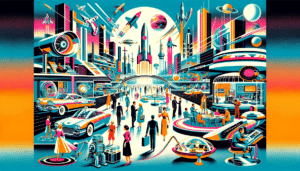

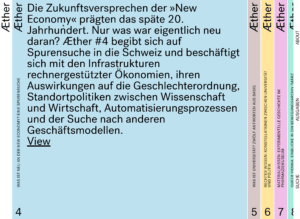


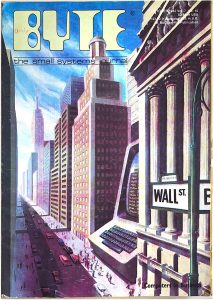
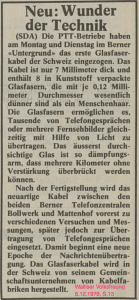
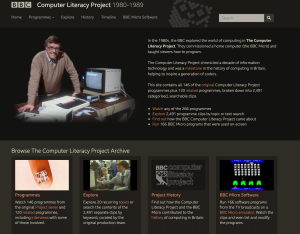
Responses
[…] PrevVorigerGoogle Music AI Tools wären interessant, wenn sie denn wirklich auch einmal released werden. NächsterTranskript zu «The Computer Revolution» Folge aus «The 21st Century» – 1967Nächs… […]